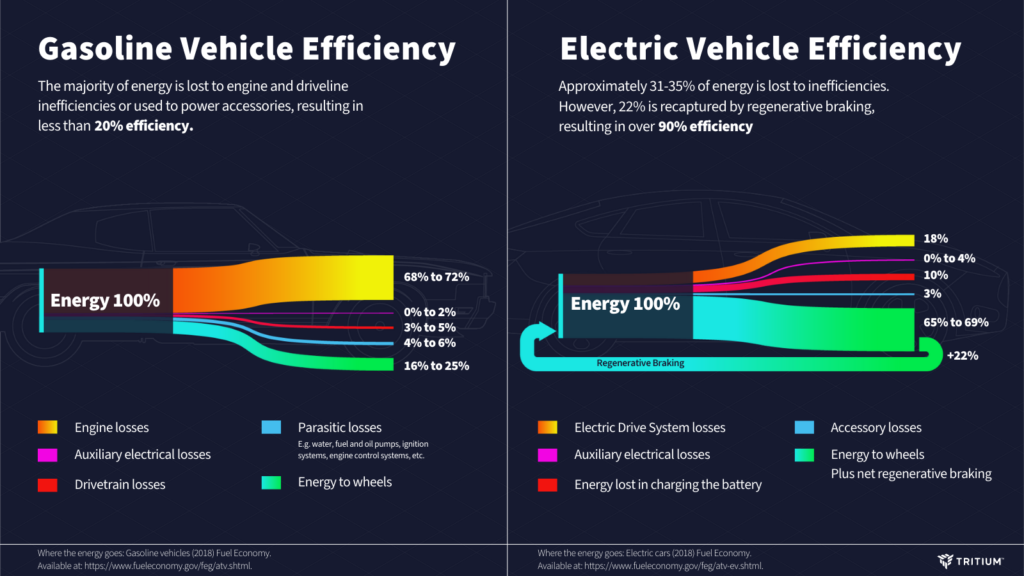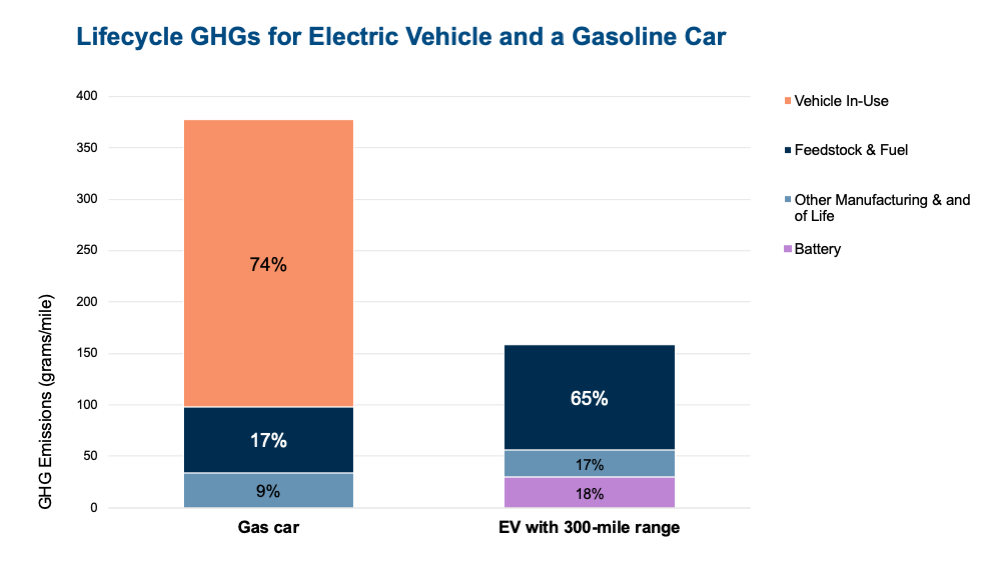Sustainability is crucial to building a better world. During Earth Month we’ll explore ways businesses can improve sustainability through electric vehicles and electric vehicle charging.
We know that electric vehicles (EVs) can help reduce greenhouse gas emissions, but how sustainable is EV charging? Short answer: More than filling up a gas tank, regardless of the power source.
According to Climate Watch, ground transportation is responsible for 11.9 percent of global greenhouse gas emissions. Those emissions are the result of directly burning gas and diesel fuel in internal combustion engines (ICEs). Reducing or eliminating greenhouse gas emissions from ground transportation is crucial to reducing the effects of climate change. The Intergovernmental Panel on Climate Change (IPCC) estimates that humanity needs to keep global warming to under 2° C by the year 2100 to avoid catastrophe. Swapping our ICE vehicles for EVs will help us hit that target. However, there’s a catch.
More than 63 percent of our electricity worldwide is generated using fossil fuels. Surprisingly, switching to EVs without switching to low-carbon energy sources will still help reduce emissions. EVs eliminate tailpipe emissions and reduce greenhouse gas emissions even when they’re charged with power generated with fossil fuel powerplants. That’s because EVs are far more efficient than ICE-powered vehicles.

Motortrend Magazine found that between 74 and 84 percent of the energy contained in gasoline is lost to heat and friction in an ICE vehicle. If you were to spend €1.80 on a liter of gasoline, only €.36 worth of it is used to move your vehicle. In comparison, only 31-35 percent of the energy in an EV’s batteries isn’t used to push the car down the road.
EVs can be charged using power from renewable energy sources like solar, wind, geothermal, nuclear, hydro, and tidal. Currently only 36 percent of global energy comes from low-carbon sources, but that figure is growing daily. The International Energy Agency (IEA) estimates that global renewable power capacity will grow by 2400 gigawatts (GW) between 2022 and 2027—that’s about the current total power output of China. The estimate is 30 percent greater than the group’s predictions in 2021 and the IEA estimates that renewable energy sources will account for more than 90% of global electricity expansion during the next five years. According to the IEA, the world is set to add as much renewable power in the next 5 years as it did in the past 20. And powering EVs with renewable energy will drastically reduce atmospheric greenhouse gas emissions.will drastically reduce atmospheric greenhouse gas emissions.
Manufacturing has to be considered when assessing the sustainability of any technology. EVs store energy in batteries, which are complex and energy intensive to manufacture. Do those complex, mineral-rich batteries make EVs and EV charging unsustainable when compared to their ICE counterparts? No, even when considering the energy and materials needed to make lithium-ion batteries, EVs are still more sustainable than ICE vehicles.

Researchers at Argonne National Laboratory recently conducted a study to estimate total lifetime greenhouse gas emission for both a gasoline car and an EV with a 300-mile electric range. They found that the emissions associated with building EVs are slightly higher than they are for ICE vehicles, but lifetime emissions are less than half.
The lower lifetime greenhouse gas emissions are the result of greater EV efficiency and the greater estimated overall lifespan of EVs. EVs are less complex than ICE vehicles. The typical internal-combustion engine (ICE) drivetrain has about 2,000 moving parts while a typical EV’s drivetrain has about 20. Because of that, it’s estimated EV drivetrains (motors and transmissions) should last longer than their ICE counterparts. Many EV drivetrains are engineered to run for up to 500,000 miles without service. That far exceeds the typical ICE drivetrain lifespan of about 133,000 miles.
EVs (and EV charging) are better for the environment and humanity than ICE-powered vehicles. When powered by renewable energy, they become the most sustainable form of powered transportation we’ve created. EVs and their charging infrastructure are crucial to our future. And governments around the world are investing heavily in EVs and EV charging infrastructure. The United States federal government is providing more than $5 billion in funding and incentives to build a coast-to-coast fast charging network and the European Union has dedicated $270 billion to its own green new deal to invest in renewable energy and other sustainability projects, including EV charging. EVs and EV charging infrastructure are here to stay for the long term and they’ll help humanity reduce greenhouse gas emissions and avoid catastrophic climate change.
Contact us today to consult an expert about how to get started with EV charging for your business.